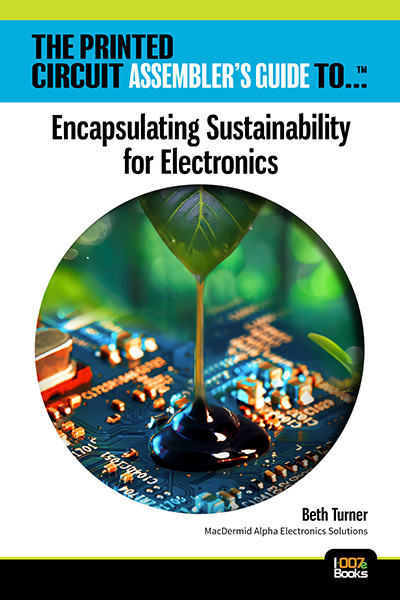Control of Excitons in a 2D Semiconductor
August 16, 2019 | NUSEstimated reading time: 2 minutes
NUS scientists have developed a method to control the binding energies of excitons in a two-dimensional (2D) semiconductor for advanced photonic and optoelectronic applications.
The optical properties of atomically thin 2D semiconductors such as monolayer transition metal dichalcogenides (TMDs) are dominated by excitons. These are quasiparticles of tightly bound electron-hole pairs. Understanding the excitonic effects and controlling the exciton binding energies in 2D semiconductors are important in unlocking their full potential for use in a variety of technical applications.
A research team led by Prof LU Jiong, Department of Chemistry, NUS has developed a method to control the excitons in a thin layer of rhenium diselenide (ReSe2), by adjusting the electron density in the underlying graphene film using the electrostatic gating effect. Electrostatic gating is a method to modify the carrier concentration of atomically thin 2D materials by the application of an electric field. The researchers used a field effect transistor device consisting of a monolayer of ReSe2 on a back-gated graphene film for their experiments. An increase (decrease) of electron carrier density in the graphene film will decrease (increase) the Coulomb interaction strength between the interacting electron-hole pairs (excitons) in the ReSe2 layer. By controlling the electron carrier concentration in the underlying graphene substrate, the researchers could control the electronic bandgap and exciton binding energy of the monolayer ReSe2 by up to hundreds of mili-electronvolts (meV).
In their experiments, the researchers demonstrated that the exciton binding energy of the monolayer ReSe2 can be continuously tuned from 460 meV to 680 meV by electrostatic gating. Unlike the conventional doping method, in which impurities are doped into the semiconductors to change their material properties, electrostatic gating has the flexibility for continuous tunability of the exciton binding energy as well as excellent compatibility for integration in modern device technology.
Prof Lu said, “The ability to precisely tune the bandgap and excitonic effects of 2D semiconductors on graphene devices could provide new insights into the band alignment and exciton dissociation at the interface of 2D semiconductors and graphene. This could potentially reduce the interface contact resistance and improve the light-harvesting efficiency of such optoelectronic devices.”
Figure shows (a) schematic illustration of a monolayer rhenium diselenide (ReSe2) on a back-gated graphene/ hexagonal boron nitride device. (b) Atomic structure of a monolayer ReSe2. The red lines show the lattice vectors (a and b). (c) Scanning tunnelling microscopy (STM) image of a monolayer ReSe2. The inset shows the line profile obtained by the STM along the step edge. (d) Atomically-resolved STM image of monolayer ReSe2. [Credit: Science Advances]
Suggested Items
Elementary, Mr. Watson: Ensuring Design Integrity
03/28/2024 | John Watson -- Column: Elementary, Mr. WatsonBack in February, many of us watched the "Big Game." It reminded me of the saying, “It's not how you start that is important, but rather how you finish." It is perfectly okay when you are talking about sports, you get off to a bad first half and need to recover in the second half. However, when it comes to PCB design, this is not a good practice. If things start badly, they usually don't recover. They continue down that same path, costing more money and losing design time.
The Pulse: New Designer’s (Partial) Guide to Fabrication
01/31/2024 | Martyn Gaudion -- Column: The PulsePCB designers fresh to the industry may think that once the schematic is loaded into CAD and routed out into XY data, the finished PCB is an “exact” copy of their XY data. That’s not an unreasonable assumption for basic designs. Here, I’ll outline some of a designer’s considerations related to signal integrity as designs become more complex.
Three Things to Improve High-Speed PCB Signoff, Part 2
09/27/2023 | Brad Griffin, Cadence Design SystemsAnother challenge for SerDes is losses within the channel design. At high speeds, dielectric material can be very lossy, making the appropriate selection of the right material, length, etc., critical for the channel. Many questions about stackup, trace widths, and height from the ground plane need to be defined up front. Simulating a signal with a topology explorer tool extracted from the design can be used to set up and run sweep parameters and push min/max length/spacing values into the Allegro schematic constraint manager (system capture).
An Overview of Rigid-flex Design
09/13/2023 | I-Connect007 Editorial TeamFor this month’s issue on rigid-flex design, we spoke with instructor Kris Moyer, who teaches the IPC class “PCB Design for Flex and Rigid-Flex Boards.” In this wide-ranging interview, Kris breaks down the hurdles facing rigid-flex designers and offers a variety of solutions for rigid board designers taking on their first rigid-flex circuits. He also provides a few horror stories to illustrate what happens if you don’t follow sound design practices, rules, and standards. And, as Kris points out, “Your fabricator is your friend.”
Elementary, Mr. Watson: Circuit Simulation, SPICE, and AI
08/21/2023 | John Watson -- Column: Elementary, Mr. WatsonAccording to the Federal Aviation Administration’s flight time limitations and rest requirements, a commercial pilot is restricted to 36 flight hours in a week, 100 hours in 28 days, and 1,000 hours in any calendar year. But before these pilots even start flying the friendly skies, they spend considerable time in a flight simulator. In the same way, PCB design and circuit simulations provide the same advantages: a controlled, safe environment for testing a circuit without the considerable overhead of fabricating and assembling the PCB.


